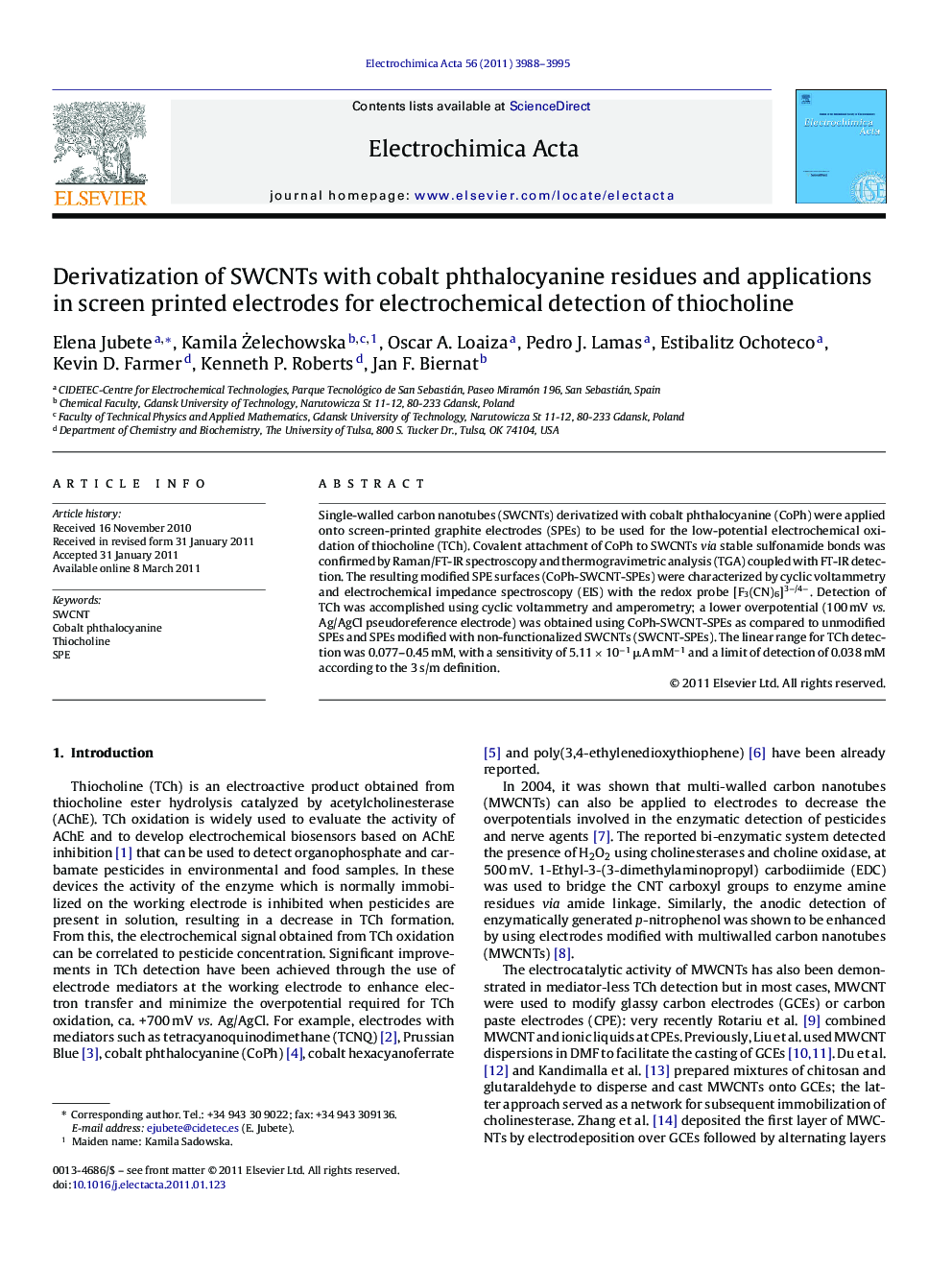| Article ID | Journal | Published Year | Pages | File Type |
|---|---|---|---|---|
| 190254 | Electrochimica Acta | 2011 | 8 Pages |
Single-walled carbon nanotubes (SWCNTs) derivatized with cobalt phthalocyanine (CoPh) were applied onto screen-printed graphite electrodes (SPEs) to be used for the low-potential electrochemical oxidation of thiocholine (TCh). Covalent attachment of CoPh to SWCNTs via stable sulfonamide bonds was confirmed by Raman/FT-IR spectroscopy and thermogravimetric analysis (TGA) coupled with FT-IR detection. The resulting modified SPE surfaces (CoPh-SWCNT-SPEs) were characterized by cyclic voltammetry and electrochemical impedance spectroscopy (EIS) with the redox probe [F3(CN)6]3−/4−. Detection of TCh was accomplished using cyclic voltammetry and amperometry; a lower overpotential (100 mV vs. Ag/AgCl pseudoreference electrode) was obtained using CoPh-SWCNT-SPEs as compared to unmodified SPEs and SPEs modified with non-functionalized SWCNTs (SWCNT-SPEs). The linear range for TCh detection was 0.077–0.45 mM, with a sensitivity of 5.11 × 10−1 μA mM−1 and a limit of detection of 0.038 mM according to the 3 s/m definition.
Research highlights► We have performed covalent attachment of cobalt phthalocyanine (CoPh) to SWCNTs via stable sulfonamide bonds, and have applied them on screen printing graphite electrodes. ► We have proved that the binding of CoPh moieties to SWCNT improves the electrocatalytic effect towards thiocholine (TCh) oxidation and permits the decrease in the oxidation overpotential of TCh. ► The derivatization of this type of nanotubes with CoPh and their easy and durable deposition on screen-printed devices open new possibilities for the construction of highly sensitive pesticide biosensors, which work at low potentials without the need of high mediator loadings.
